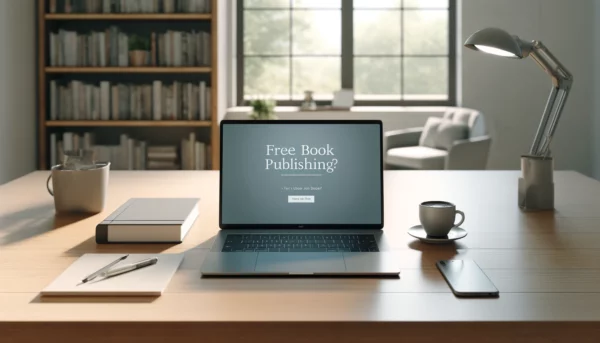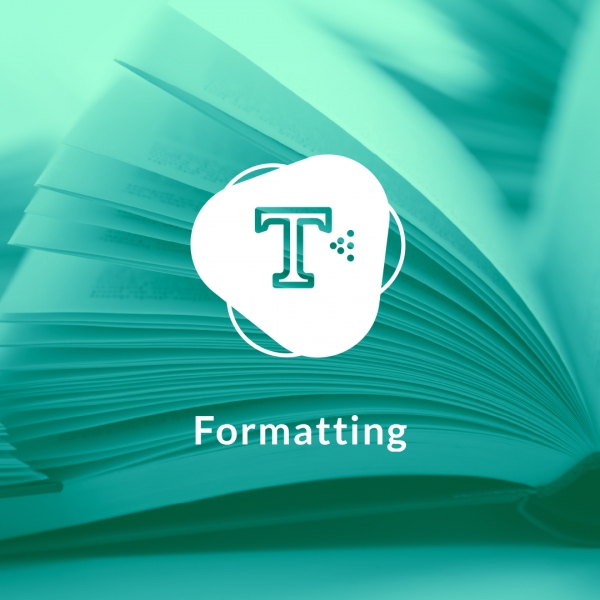If you’re a self-published author, you’ve probably heard that royalty management is crucial. But let’s be honest: understanding royalties can feel like navigating a maze with a blindfold on. Whether you’re setting your book’s retail price, deciding on ebook royalties, or figuring out how much Amazon Kindle Direct Publishing will pay you, the world of royalties isn’t always as clear as a freshly edited manuscript. But don’t worry – this financial guide will break down everything you need to know to manage royalties as a self-published author like a pro.
Get ready to take control of your royalty payments, maximize your earnings, and keep more money in your pocket, all while avoiding the confusion and headaches that come with the publishing process. By the end of this article, you’ll be equipped with the knowledge to make smart decisions about your self-publishing book royalties, track your earnings, and potentially even make your books work harder for you. So, let’s dive in and give those royalties the attention they deserve!
Understanding Royalties in Self-Publishing
Alright, let’s start by getting to the bottom of what book publishing royalties actually are. In the simplest terms, a royalty is the money you make every time your book is sold. Think of it like the payment you get for sharing your literary brilliance with the world. When you self-publish, you usually receive a percentage of your book’s retail price, minus any fees or costs the platform charges. The exact percentage can vary depending on where and how you publish—so don’t expect a one-size-fits-all answer.
Now, let’s talk numbers. If you’re selling your book on Amazon Kindle Direct Publishing (KDP), for example, you can earn up to 70% of the retail price for eBooks priced between $2.99 and $9.99. Outside of that price range, it drops to 35%. That means for a $4.99 book, you could pocket around $3.49, which sounds great until you remember there are still things like production costs and platform fees to account for. Still, it’s way better than the 10-15% royalty traditionally offered by a traditional publishing house.
And speaking of traditional publishing, let’s get this clear: if you go the traditional publishing route, you’re likely to see a much smaller cut of your book’s sales. Why? Because publishers, agents, editors, and a whole team of people are involved, each getting a slice of the pie. The royalty percentages they offer are usually in the 5-15% range for hardcovers and a little more for paperback copies, with eBook royalties often landing around 25%. Not exactly the “get rich quick” scenario we all hope for, right?
So, as you can see, self-publishing royalties are one of the major perks of choosing the indie path. The key to maximizing them? Keeping track of your sales, understanding the fees involved, and knowing how to price your book to make the most out of every sale. Sounds like a lot, but don’t worry—we’ll break it all down as we go.
Your Publishing Journey Awaits – Start NowThe Self-Publishing Journey: Your Path to Profit
Self-publishing is like being the CEO of your own literary empire. From writing the first word to seeing your book on virtual shelves, you call the shots. And one of the biggest perks of this independence is the ability to manage royalties as a self-published author—but only if you understand the process. So, let’s take a quick detour through the self-publishing process, because this is where the magic happens.
Writing Your Book
First up: writing your book. This part’s on you, obviously. But as you go from “just finished my manuscript” to “I’m ready to publish,” keep in mind that the quality of your book—be it the writing, the professional editing, or the cover design—directly impacts how many copies you’ll sell. A well-edited, well-designed book isn’t just nice to have—it’s a money-maker. If your book looks and reads like a million bucks, readers are more likely to buy it, and more sales mean more royalty payments in your pocket.
Time to Publish
Once your manuscript is ready, it’s time to publish. Platforms like Amazon KDP, IngramSpark, and Smashwords are where the magic happens, and they all have different systems for calculating royalties. Some platforms offer higher royalty rates, but they might also charge more in fees or give you fewer options for distribution. Others might be cheaper but offer lower royalties or more limited sales channels. You’ll need to weigh the pros and cons to make sure you’re getting the best deal for your book.
Let’s not forget about creative control. Unlike traditionally published authors, who are often at the mercy of publishing houses’ decisions, you get to set your own retail price and choose how your book is distributed. You’re not just the author; you’re the publisher, too. And with that power comes the responsibility to make smart choices—like setting a competitive price point for your book that both attracts readers and ensures you’re making a profit. If you price your book too high, you risk scaring readers away; if it’s too low you’re leaving money on the table. It’s a balancing act, but with a little research, you can find that sweet spot where you’re getting the most out of every sale.
Distributing Your Book
And while we’re on the topic of distribution, don’t forget about expanded distribution channels. Platforms like Amazon, Barnes & Noble, and Apple Books all allow you to reach different audiences, but each one comes with its own set of rules and royalties. Some might charge extra fees for listing your book with them, but others will give you access to larger markets. More exposure = more sales, which equals more royalties.
By now, you should have a solid understanding of how to manage royalties as a self-published author. Keep track of your book’s sales, monitor your royalty rate, and make sure you’re using the right distribution platforms. And remember, it’s not just about how much you’re getting per sale—it’s about how many books you’re selling in total. With the right tools and strategies, you can set yourself up for a successful self-publishing journey.
Traditional Publishing vs. Self-Publishing Royalties
Let’s take a moment to examine the age-old debate: self-publishing vs. traditional publishing. While there’s no right or wrong choice, one thing’s for sure—royalties are a big factor in the decision-making process. If you’re an aspiring author trying to figure out which route is best for you, understanding the difference in royalty rates and how they impact your bottom line is crucial.
In traditional publishing, you’re likely to sign a publishing deal with a publishing house that handles all the heavy lifting—editing, cover design, distribution, and marketing. Sounds like a dream, right? But with that comes a cost—literally. Traditional publishers take a significant share of your book’s royalties, typically offering between 5-15% of the book’s retail price for hardcovers and slightly more for paperbacks. For eBook royalties, this percentage can increase slightly but often stays in the 25% range. So, for a $20 book, you might only see around $1-$3 per copy sold, once your publisher takes their cut. And remember, that doesn’t even include the agent’s fee if you’re working with one.
But here’s the kicker: in exchange for those smaller royalty percentages, you get access to the publisher’s expertise, established distribution networks, and marketing muscle. They’ll help you get your book into brick-and-mortar bookstores, through distributors like Barnes & Noble, and in front of major retailers, which is a level of visibility most self-published authors can only dream of. It’s a trade-off between higher royalty percentages and more creative autonomy in self-publishing, versus a larger marketing and distribution push with a traditional publisher.
Self-Publishing Royalties
On the flip side, self-publishing royalties are much more generous. With platforms like Amazon Kindle Direct Publishing (KDP), you can earn up to 70% of your retail price for eBooks priced between $2.99 and $9.99. And even better, you control your pricing, marketing, and distribution choices. If your book is priced at $4.99, you could be taking home $3.49 per copy—way more than you’d ever get from a traditional publishing house. The royalty rate is also more transparent, so you can easily see how much you’re making with every sale.
However, there’s no free lunch in self-publishing. While your royalty rate is higher, you’ll be responsible for all aspects of the publishing process: editing, cover design, marketing, and distribution. You’ll also need to handle the platform fees, which can eat into your profits. For example, Amazon KDP takes a cut for using their platform, and you’ll be charged delivery fees based on the size of your eBook. So while you might earn more per sale, you’re also putting in more work to make those sales happen.
The bottom line? If you want higher royalties and more control over your publishing process, self-publishing is your best bet. But if you’re looking for more extensive distribution channels and marketing support, traditional publishing might be the way to go—even if you end up with a smaller slice of the royalty pie. It all depends on your priorities and where you want to take your book.
The Impact of Book Sales and Distribution Channels on Royalties
When it comes to royalties, one of the most important factors to consider is book sales volume. The more books you sell, the more royalties you’ll collect. Seems simple enough, right? But how do you actually boost sales and ensure you’re maximizing your earnings? That’s where distribution channels come in. Let’s dive into how these channels impact your royalties and how you can leverage them for maximum profit.
First, let’s talk about the elephant in the room: Amazon Kindle Direct Publishing (KDP). As the world’s largest self-publishing platform, KDP gives you access to millions of readers, but it also takes a significant share of your royalties. Depending on your book’s price, Amazon will typically offer you a royalty rate of 35% or 70% for eBooks, but you need to factor in things like delivery fees and platform costs. However, the huge sales volume on Amazon can offset these fees, meaning you still come out ahead if you’re able to tap into their vast customer base.
Don’t forget about other major platforms like Apple Books, Barnes & Noble, and Kobo. Each of these platforms has its own set of royalty rates and distribution terms, but they also open doors to expanded distribution channels that can increase your sales. For instance, Barnes & Noble is a great option if you want to reach a more specific U.S.-based market, while Apple Books gives you access to international readers. By choosing a wide array of distribution platforms, you can cast a wider net and potentially reach more readers, which means more royalties.
But distribution isn’t just about going wide—it’s also about making strategic decisions to ensure you’re getting the best deal for your book. One important choice is whether to go for exclusive distribution through platforms like Amazon KDP Select. In exchange for enrolling your eBook in Amazon’s exclusive program, you get benefits like higher royalties (up to 70% on certain pricing tiers), the ability to run promotions like Kindle Countdown Deals or Free Promotions, and access to a larger audience via Kindle Unlimited. However, this also means your book will only be available on Amazon, so you’ll need to weigh the pros and cons.
Now, let’s talk about the retail price. This may seem obvious, but it’s worth emphasizing: the price at which you sell your book directly affects how much you make per sale. If you price your book too high, readers may hesitate to buy. Too low, and you risk losing out on potential earnings. As a self-published author, you have the freedom to experiment with different pricing strategies to see what works best for your audience. Just make sure to factor in things like production costs, platform fees, and the royalty percentage to ensure you’re still making a profit.
Finally, there’s the matter of physical books. If you’re selling paperback copies through platforms like Amazon or IngramSpark, your royalties can be lower than with eBooks. Why? Because there are production costs involved—materials, printing, and shipping fees—that eat into your royalty payments. Still, print sales can be lucrative, especially if you’re marketing your book effectively and your book is in demand. Just make sure to account for the costs involved when setting your retail price to ensure you’re making a reasonable profit.
In the end, the key to maximizing your royalties lies in understanding how your distribution channels work, making strategic decisions about your retail price, and consistently driving sales. More exposure through diverse platforms means more chances to sell, which ultimately leads to more royalties in your pocket.
Manage Royalties As a Self-Published Author
Managing your royalties as a self-published author is more than just keeping track of sales; it’s about making strategic decisions that put you in control of your earnings. From choosing the right distribution platforms and setting an optimal retail price to understanding the intricacies of royalty rates and royalty structures, every step of the process impacts your bottom line. The beauty of self-publishing is that you have the freedom to shape your own publishing journey and maximize your profits.
So, whether you’re focusing on growing your ebook royalties through platforms like Amazon KDP, expanding your reach to major retailers like Barnes & Noble, or experimenting with exclusive distribution options, remember: your royalties reflect the effort and strategy you put into your book’s success. By staying informed, tracking your earnings, and optimizing your approach, you can ensure that your self-published book works as hard as you do.
Here’s to taking full control of your royalties and building the publishing career you’ve always dreamed of—one sale at a time!
Ready to take your publishing journey to the next level? Spines offers tools, resources, and expert guidance to help self-published authors maximize their royalties and succeed in today’s competitive market. Let Spines be your partner in crafting the publishing career you’ve always dreamed of.








